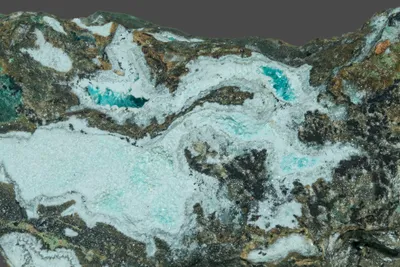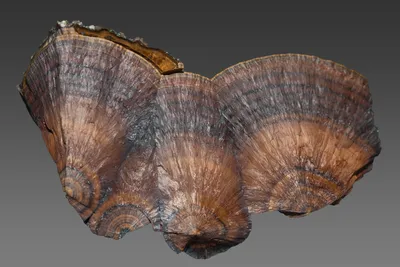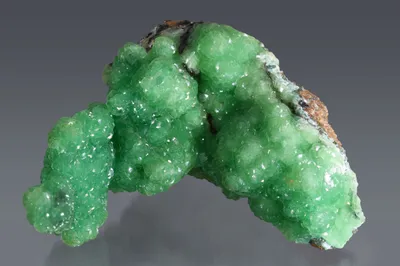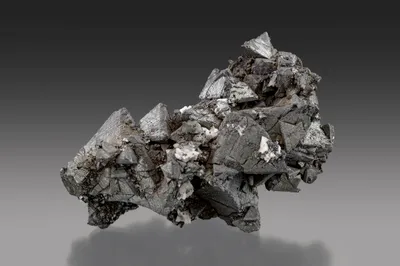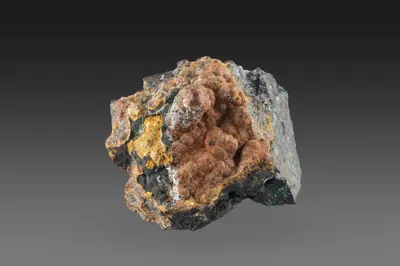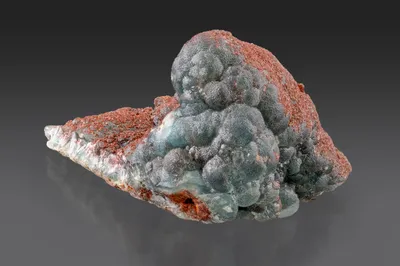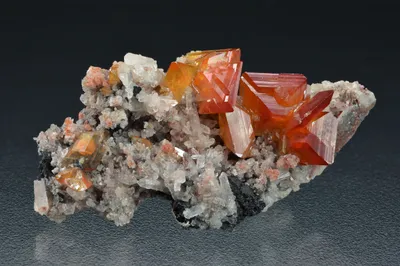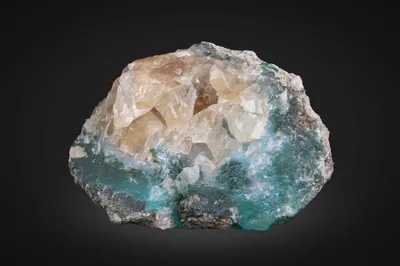Mineral Species
Quartz
Type Locality
No
Composition
SiO2
Crystal System
Trigonal
Status at Tsumeb
Confirmed
Abundance
Common
Distribution
First second and third oxidation zones; sulphide ores; country rocks (feldspathic sandstone, dolostone stratigraphy)
Paragenesis
Hypogene; supergene; rock-forming (detrital)
Entry Number
Species; TSNB295
General Notes
Quartz is a common mineral at Tsumeb, and abundant in parts of the deposit. Nevertheless, it is often overlooked. Quartz of hypogene origin is the third most abundant gangue mineral (behind calcite and dolomite). Notably, from 26 Level downwards silicification is an important alteration style associated with the primary mineralisation. Furthermore, detrital quartz is an essential component of the feldspathic sandstone.
Well-crystallised quartz of specimen quality, however, is relatively scarce. Nevertheless, a remarkable 70 mm terminated quartz crystal, overgrown by a druse of carbonate was recovered from 13 Level (at the base of the first oxidation zone) and is in the Wilhelm Klein Collection at Harvard University (MGMH 127336).
Pinch and Wilson (1977) reported that colourless, grey and milky crystals to 10 mm have been found. Quartz "points", typically colourless, prismatic crystals with clear pyramidal terminations (to 2 or 3 mm), are quite commonly encountered with a wide variety of associated minerals.
Red quartz crystals, due to the presence of cuprite inclusions are notable (Von Bezing et al. 2014).
Coatings of drusy, colourless quartz, possibly of authigenic origin, were commonly observed in the upper parts of the first oxidation zone, encrusting secondary mineral species and assemblages.
Associated Minerals
adamite; agardite-(Ce); alamosite; albite; almandine; anglesite; anorthite; aragonite; arsendescloizite; arseniosiderite; arsenogoyazite; arsenohopeite; arsentsumebite; arthurite (?); aurichalcite; azurite; baileychlore; baryte; bayldonite; beaverite-(Cu); betpakdalite-CaCa; betpakdalite-CaMg; beudantite; biotite series; bornite; brunogeierite; calcite; calvertite; carminite; cerussite; chalcopyrite; chenevixite; chrysocolla; clinochlore; conichalcite; copper; corkite; cornwallite; coronadite; cotunnite; cuprite; dioptase; dolomite; duftite; dyscrasite (?); edwardsite; ekatite; epidote; erikapohlite; fahleite; ferrilotharmeyerite; fluorapatite; fluorite; fraipontite; gaitite; galena; gartrellite; gebhardite; gerdtremmelite; goethite; gold; goudeyite (?); graphite; greenockite; gunningite; gypsum; helmutwinklerite; hematite; hemimorphite; hidalgoite; hörnesite; ilmenite; kaolinite; karibibite; kegelite; keyite; koritnigite; köttigite; krieselite; lammerite; larsenite; lavendulan; leadhillite; ludlockite; lukrahnite; magnetite; malachite; mathewrogersite; mawbyite; melanotekite; microcline; mimetite; molybdofornacite; montmorillonite; mottramite; munakataite; muscovite; niedermayrite; o'danielite; ojuelaite; olivenite; orthoclase; otjisumeite; ovamboite; philipsbornite; philipsburgite; plumboselite; plumbotsumite; powellite; prosopite; pyrite; queitite; renierite; rosasite; rutile; schaurteite; scheelite; siderite; sidpietersite; silver; smithsonite; söhngeite; sphalerite; stibioclaudetite; stolzite; stranskiite; tennantite-(Zn); titanite; tourmaline supergroup; tsumcorite; tsumebite; tsumgallite; warikahnite; willemite; wulfenite; wurtzite; zharchikhite; zincite; zincolivenite; zincroselite; zircon
Pseudomorphs
Quartz has been reported to form pseudomorphs after the following minerals: azurite (rare); wulfenite (rare).

